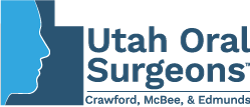1 out of 8 people in the United States has an issue with their jaw joint.
Because of how common these issues are, there are a variety of ways to treat them. Despite the wide variety of treatment options, not everything will work for everyone.
One person may respond to simple treatment while another person may need to go through a couple of treatment options before finding the one that works best for them.
If you have struggled with jaw issues and have not found relief in the treatments provided, orthognathic surgery may be best for you. You may be wondering what exactly this surgery is and what you should expect.
In this guide, we will cover everything you should expect
To learn all you need to know about this type of surgery, continue reading this orthognathic surgery guide.
What Is Orthognathic Surgery?
Orthognathic surgery is also known as corrective jaw surgery.
The purpose of this surgery is to correct any irregularities in an individual’s jaw. Realigning of the jaw also occurs to make sure it functions the way it should.
The main purpose of this surgery is to help improve and restore how someone’s jaw works, but it can as well improve facial appearance.
Conditions That Can Lead to Surgery
Many conditions and issues that can lead to someone getting orthognathic surgery.
Conditions and issues:
- TMJ disorder; chronic jaw pain
- Difficulty chewing and swallowing
- Locked jaw
- Sleep Apnea
- Facial injury/imbalance
- Excessive wearing of teeth
- Receding chin
- Birth defects
While some of these conditions and issues are manageable without surgery, people may not find relief from them. This is when surgery may be best. Speaking with an oral surgeon about this surgery being a possible option is a good idea if you are not finding relief with other forms of treatment.
Where in the Jaw Surgery Takes Place
Depending on what your reasoning is for the surgery, there are three areas in the jaw this surgery can take place.
1. Lower Jaw
Orthognathic jaw surgery that is done on the lower jaw is called a mandibular osteotomy.
An incision is made behind the molars and then down the jaw. This lets the surgeon have the ability to move the whole jaw into the desired position.
2. Chin Surgery
This surgery is also known as a genioplasty. A genioplasty has the purpose of restructuring the chin if someone has a small chin.
The surgery is done by cutting a piece of the chin bone and then moving it forward. Once it is in the desired placement, it is then screwed in.
3. Upper Jaw
Also referred to as a maxillary osteotomy, this surgery is performed on the upper jaw.
Reasons for this surgery:
- Crossbite
- Protruding or preceding upper jaw
- Open bite
- Too many teeth showing
- Too little teeth showing
- Midfacial hypoplasia; reduced facial growth in the middle of the face
The surgeon will cut bone that is above the teeth so they can move the upper jaw as a whole. When working on an open bite, the surgeon will simply shave away any excess bone. Once the jaw is placed in the desired position, it is screwed in.
What You Should Expect
Having an idea of what to expect through this entire process will make it much easier and less stressful. Once you and our team have decided surgery is the best option for you, we will give you a list of how to prepare for surgery as well as what to do after the surgery is complete.
Preparation
In some cases, you may be required to wear braces for about 12-18 months. The braces will help align your teeth as much as possible before the procedure.
A variety of things will be done to come up with the best surgery plan for your jaw. X-rays and other ways to obtain pictures of your teeth will give us the information we need on what will be best for you. CT and MRI are also used to help us plan the surgery.
Afterward
Once the surgery is complete, you will likely stay in the hospital for 2 to 4 days.
As you are released, we will give you all of the instructions you need for recovery.
Some instructions you may receive:
- What you can take for pain
- What you can eat
- What to avoid
- When you can return to normal activities
During your recovery, you may experience some effects from the surgery. Pain, swelling, difficulty chewing, and excessive drool are all common after surgery. The instructions we will give you can help alleviate these symptoms and the effects of the surgery.
Complete healing will take around 12 weeks. Once you reach the 6th week of healing, we may use braces to help with aligning.
Getting Back Your Comfort
Now that you have the complete guide on orthognathic surgery, you may be wondering where you should go to have this surgery done? Who is the best surgeon for you?
Here at Utah Oral Surgeons, we strive in helping you relieve many conditions and issues you are experiencing. Our surgeons strive to help you get back the comfort you once had and desire. Both surgeons that work at Utah Oral Surgeons have a combined experience of 45 years in oral surgery.
There are three offices you can choose from to visit and contact:
- Provo office
- American Fork office
- Price office
If you are looking for a surgeon to help you find relief, or if you have any questions or concerns, contact us today.

